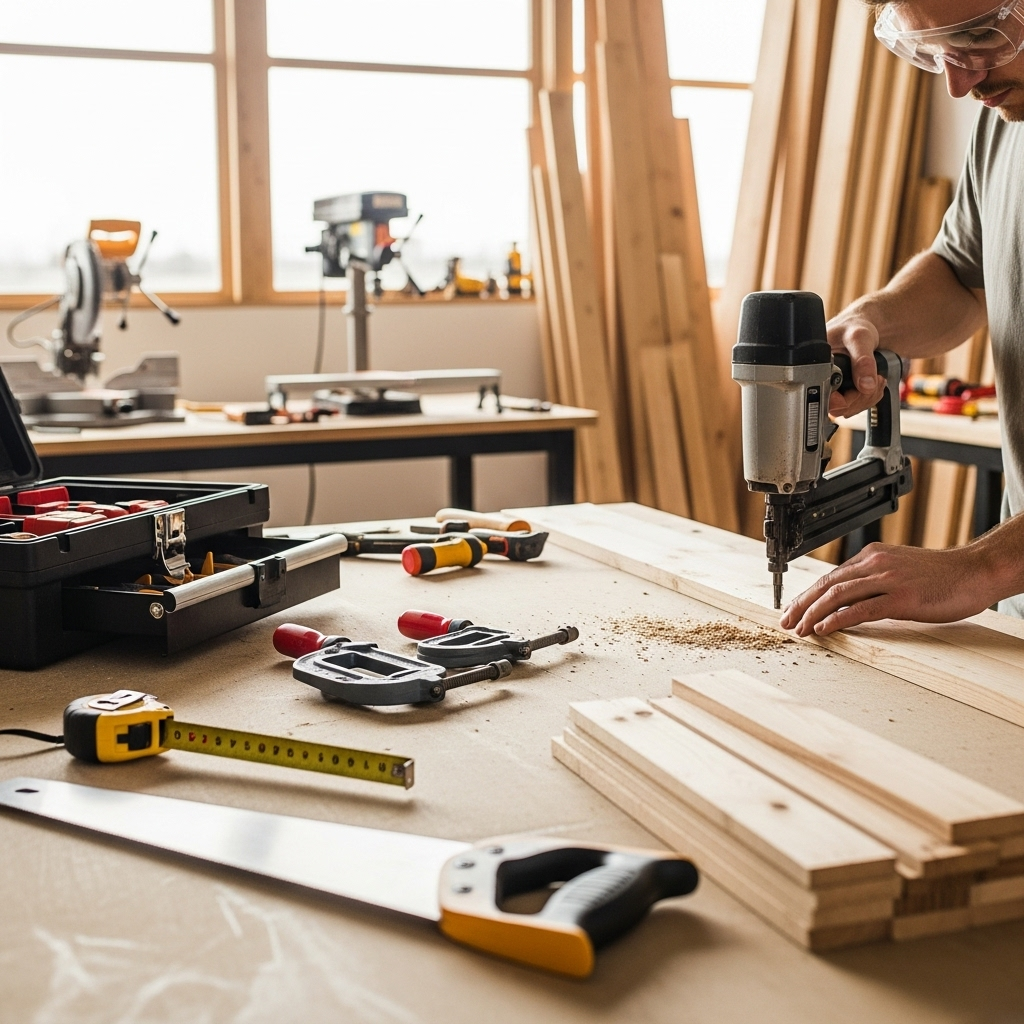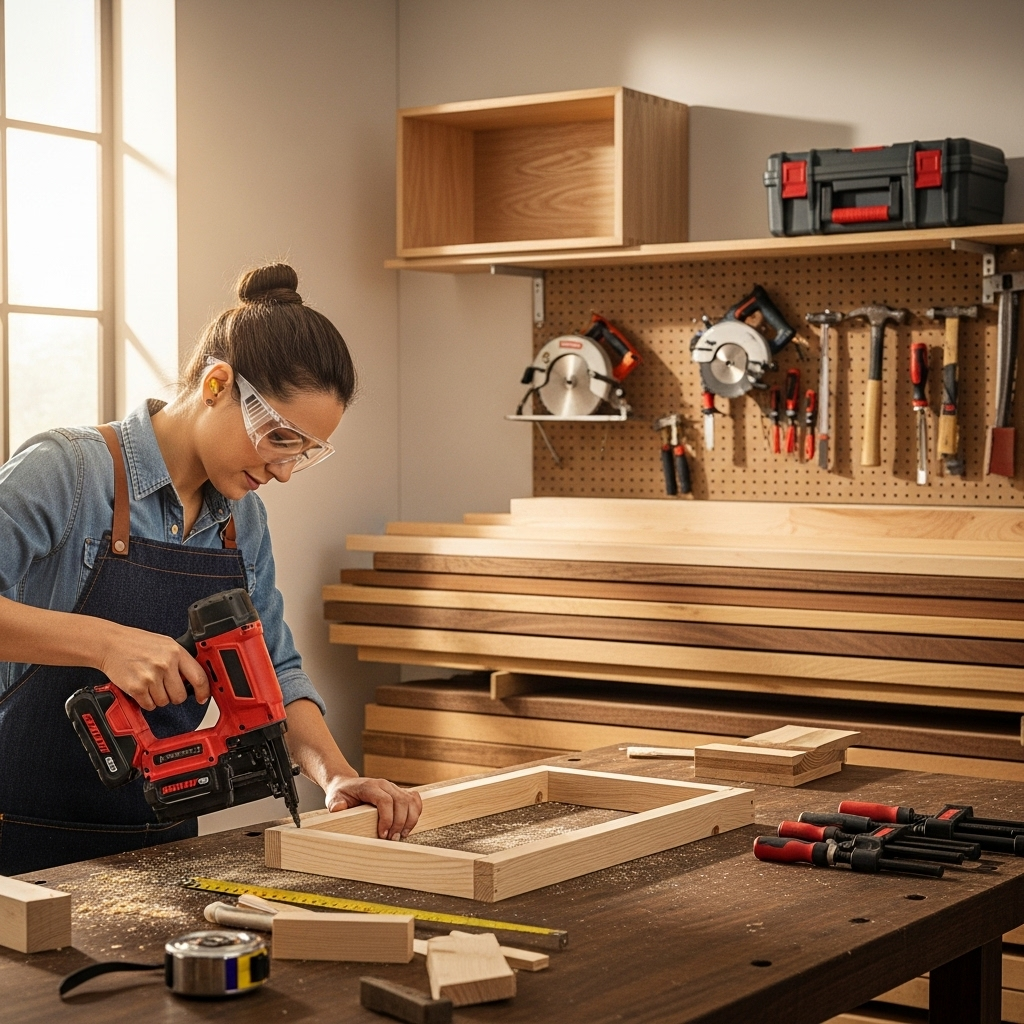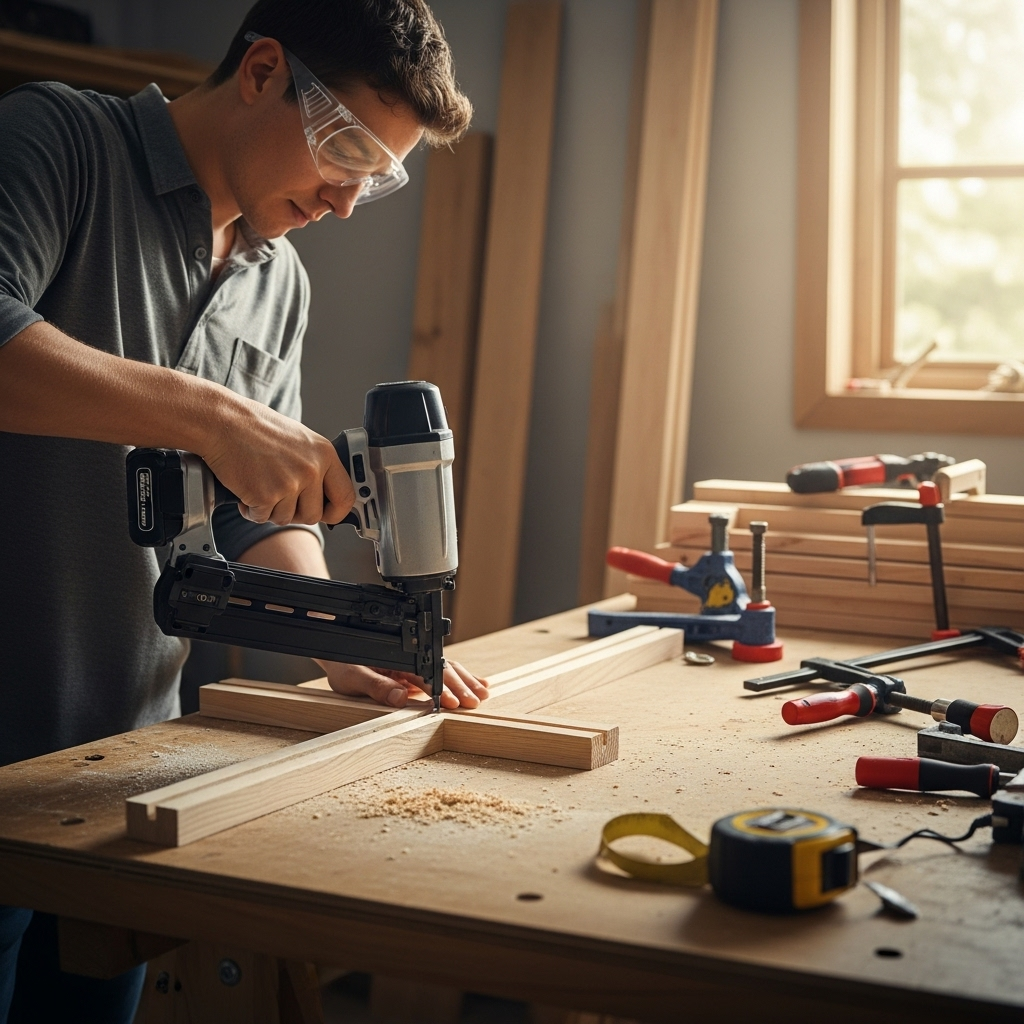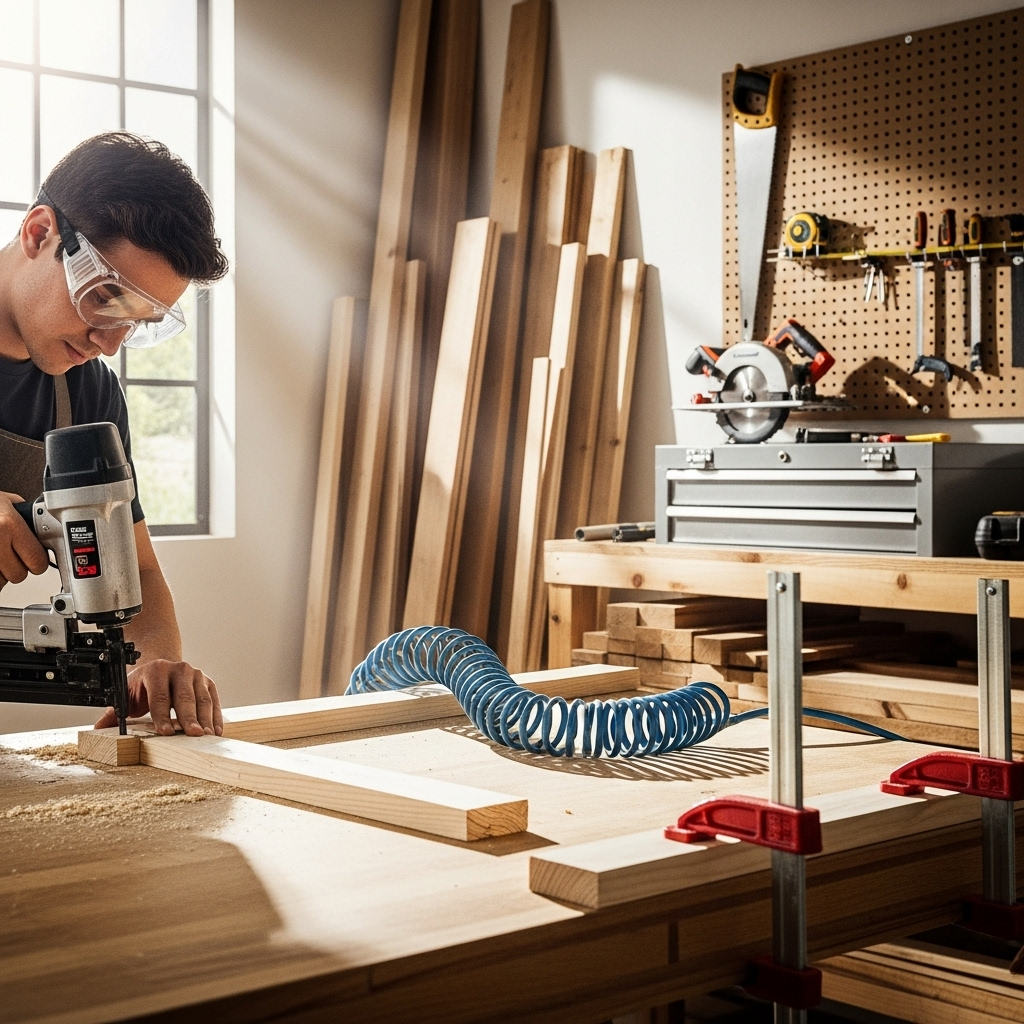Quick Summary: Investing in a roofing nail gun with the best warranty coverage protects your tool investment. Look for comprehensive manufacturer warranties covering defects and offering extended periods for parts and labor. Understand what’s covered to ensure peace of mind and avoid unexpected repair costs for your essential job site tool.
Hey everyone, Jack Shaffer here, your go-to guy for all things nailers at Nailerguy! Today, we’re diving into a topic that can save you a lot of headaches and money: understanding the warranty coverage for your roofing nail gun. Buying the right roofing nailer is a big step for any DIY homeowner or professional contractor. They help you get those shingles on fast and secure. But what happens when things go wrong? That’s where a good warranty comes in. It’s not the most exciting part of buying a tool, but trust me, it’s super important. Let’s break down what to look for so you can feel confident about your purchase and keep that nailer firing on all cylinders.
Table of Contents
Why Warranty Coverage Matters for Your Roofing Nail Gun
Think of a roofing nail gun warranty like a safety net for your tool. These are robust tools that work hard, often in tough weather conditions, pounding thousands of nails. It’s natural for wear and tear, manufacturing defects, or even accidental damage to happen. Without a solid warranty, a small issue could turn into a costly repair, hindering your project timeline and your budget.
A good warranty means the manufacturer stands behind their product. They’re saying, “We believe this tool is built to last, and if something goes wrong due to our craftsmanship or materials, we’ll make it right.” This is especially crucial for roofing nailers, which are a significant investment. They aren’t cheap, and you rely on them to perform flawlessly when you’re up on the roof.
Understanding your warranty isn’t just about knowing it exists; it’s about knowing what it covers, for how long, and what you need to do if you ever need to use it. Missing a key detail could mean a denied claim, leaving you high and dry. We’ll make sure you’ve got the clear picture.
Types of Roofing Nail Gun Warranties

When you’re shopping for a roofing nail gun, you’ll notice that warranties can vary quite a bit between brands and even between different models from the same brand. Understanding the different types will help you choose the best protection for your specific needs and budget. Here are the most common types of warranties you’ll encounter:
- Limited Lifetime Warranty: This sounds great, but it’s important to read the fine print. Often, “lifetime” refers to the natural lifespan of the product under normal use, not your lifetime. It typically covers manufacturing defects in materials and workmanship for a specified period.
- Limited Warranty (Specific Period): Most tools come with a limited warranty that lasts for a set number of years (e.g., 1 year, 3 years, 5 years). This warranty covers parts and labor for defects. Some might be tiered, with different coverage lengths for different components (e.g., the body might have longer coverage than seals or O-rings).
- Extended Warranty/Service Plan: This is an optional purchase that extends the manufacturer’s warranty period. It can be a good idea for high-value tools or if you plan to use the tool extensively, but weigh the cost against the potential repair costs.
- Pro-Rated Warranty: In some cases, a warranty might be pro-rated. This means the manufacturer covers 100% of the repair cost for a certain period, and then the coverage decreases over time. You might have to pay a percentage of the repair cost as the warranty nears its expiration.
What Typically IS Covered by a Roofing Nail Gun Warranty
The core purpose of a warranty is to protect you from issues that aren’t your fault. For roofing nail guns, this generally includes problems arising from how the tool was made or the materials used. Here’s a breakdown of what you can usually expect to be covered:
Manufacturing Defects
This is the bread and butter of any warranty. If a part was manufactured incorrectly, or if the materials used were substandard, and it causes the tool to malfunction, the warranty should cover the repair or replacement. This could include things like internal mechanisms not fitting together properly, faulty wiring in electric models, or cracks that appear in the housing due to poor molding.
Parts and Labor for Defects
A robust warranty will cover both the cost of the replacement parts and the labor required to fix the defect. Some warranties might only cover parts, leaving you to pay a technician for their time, which can add up quickly. Always look for coverage that includes both!
Specific Component Coverage
Some manufacturers will explicitly list certain components and the duration of their specific warranty. For instance, the main body or motor might have a longer warranty than wear-and-tear items like seals, O-rings, or driver blades. It’s crucial to understand these distinctions so you don’t expect coverage for parts designed to be replaced periodically.
Damage During Shipping
If your new roofing nail gun arrives damaged due to issues during transit, the warranty or the retailer’s policy should cover this. It’s essential to inspect your new tool immediately upon arrival and report any damage promptly.
What Typically IS NOT Covered by a Roofing Nail Gun Warranty

Just as important as knowing what is covered is understanding what isn’t. Most warranties have exclusions to protect manufacturers from misuse or normal wear and tear. Being aware of these will help you avoid situations where your warranty claim might be denied.
Normal Wear and Tear
This is the most common exclusion. Parts that are expected to wear out with regular use, such as O-rings, seals, springs, bumpers, and exhaust ports, are typically not covered after a certain period or if they show signs of extensive use. Think of it like tires on a car – they wear down over time and need replacement; this isn’t a manufacturing defect.
Accidental Damage
Dropping the tool, running it over with a truck, or using it as a hammer are not covered. If you damage the nail gun through an accident, you’ll likely be responsible for the repair costs.
Misuse or Abuse
Using the tool for purposes it wasn’t designed for, modifying it, or operating it without proper maintenance can void the warranty. For example, using roofing nails in a framing nailer or attempting to drive nails into materials far too hard are examples of misuse.
Lack of Maintenance
Manufacturers expect you to perform basic maintenance, like cleaning, lubrication (if required), and ensuring clean air supply for pneumatic tools. If a tool fails because it wasn’t properly maintained, the warranty claim will likely be rejected. For pneumatic tools, using a water separator and oiler is part of recommended maintenance. You can find great resources on tool maintenance at organizations like the Occupational Safety and Health Administration (OSHA) regarding safe tool use and maintenance.
Cosmetic Damage
Scratches, dents, or fading paint that don’t affect the operational performance of the tool are usually not covered. These are purely aesthetic and don’t impact the tool’s ability to do its job.
Damage from Accessories or Consumables
Using improper nails, damaged hoses, incorrect air pressure, or unapproved lubricants can potentially void your warranty if they cause damage to the tool. Always use accessories and consumables recommended by the manufacturer.
Damage from Environmental Factors
Prolonged exposure to extreme temperatures, excessive moisture, or corrosive environments that lead to damage might not be covered, especially if the tool is not rated for such conditions.
Key Factors to Look for in Roofing Nail Gun Warranty Coverage
When you’re comparing different roofing nail guns, the warranty is a crucial factor, especially if you’re looking for a “roofing nail gun with the best warranty coverage.” Here’s what you should actively seek out:
Warranty Length
Longer is almost always better. While a standard 1-year warranty is common, look for brands that offer 3, 5, or even longer periods. For professional use, a longer warranty period is a strong indicator of the manufacturer’s confidence in their product’s durability.
Coverage Scope
Does it cover all parts and labor for manufacturing defects? Are there any specific exclusions that seem unreasonable? A comprehensive warranty will be clear about what it covers and won’t leave you guessing.
Ease of Claims Process
Chasing a warranty claim can be frustrating. Look for brands known for a straightforward and responsive claims process. Check online reviews from other users about their experiences with warranty service. A company that makes it easy to get your tool repaired or replaced when needed is invaluable.
Availability of Service Centers
If you need a repair, how accessible are authorized service centers? If you have to ship your tool across the country, it adds time and cost. Some brands have a strong network of local repair shops, which can be a significant advantage.
Registration Requirements
Many warranties require you to register your tool within a certain timeframe after purchase to be valid. Don’t skip this step! Keep your receipt and any warranty documentation in a safe place.
Exclusions and Limitations
Read the warranty document carefully. Understand what specific parts or types of damage are excluded. Pay attention to any limitations on usage (e.g., professional vs. DIY use) that might affect your coverage.
Comparing Top Brands: Warranty Highlights

When it comes to roofing nail guns, some manufacturers stand out for their commitment to warranty support. While specific terms can change, here’s a general overview of what you might expect. Remember to always check the latest warranty information directly from the manufacturer or your retailer before making a purchase.
Here’s a look at some popular brands and what they often offer:
| Brand | Typical Warranty Length (New Tools) | Key Coverage Points | Notes |
|---|---|---|---|
| Metabo HPT (formerly Hitachi) | Often 5 Years (New) | Covers manufacturing defects in materials and workmanship. Includes parts and labor. “Protect Your Purchase” program for certain tools. | Known for robust professional-grade tools and strong warranty support. |
| Paslode | Typically 2 Years (New) | Covers defects in materials and workmanship. Usually includes parts and labor for the stated period. | Paslode offers both pneumatic and cordless options, with warranties generally reflecting their professional target market. |
| Senco | Varies (Often 1-3 Years for Pro Series) | Limited Lifetime Warranty on certain defects, with specific duration warranties for other model lines and components. Includes parts and labor. | Senco has a reputation for quality. Their professional-grade tools usually come with better warranty terms. |
| DEWALT | Typically 3 Years (Limited) | Covers defects in material or workmanship. Includes parts and labor. They also offer a 1-year free service contract and 90-day money-back guarantee on many tools. | DEWALT is a very popular brand, and their warranties are generally competitive and accessible. |
| BOSTITCH | Often 7 Years (for specific parts/models), 1-3 Years (Tool Body) | Offers longer warranties on certain components like the drive cylinder, and shorter, but still good, general tool warranties. | BOSTITCH has a long history and offers competitive warranty terms, especially on their professional lines. |
Disclaimer: Warranty terms are subject to change by the manufacturer and can vary by region and specific product model. Always verify current warranty details at the time of purchase.
How to Maximize Your Roofing Nail Gun Warranty Coverage
Protecting your investment goes beyond just buying a tool with a good warranty; you have to actively maintain that coverage. Here’s how you can ensure your warranty stays valid and ready to help if you need it:
1. Register Your Tool Immediately
This is non-negotiable for most manufacturers. Most warranties are void if the tool isn’t registered within a specified period (often 30-90 days) after purchase. Keep your receipt safe as proof of purchase.
2. Read the Warranty Document Thoroughly
Don’t let it gather dust! Understand all the terms, conditions, exclusions, and the procedure for making a claim. If anything is unclear, contact the manufacturer directly before you buy or soon after.
3. Store and Use the Tool Correctly
Follow all manufacturer instructions for operation, storage, and maintenance. For pneumatic nailers, this includes using the correct air pressure and ensuring a clean, lubricated air supply. For battery-powered tools, use only the recommended batteries and chargers.
4. Perform Regular Maintenance
As mentioned, lack of maintenance is a common reason for denied claims. Keep your tool clean, free of debris, and lubricate it as recommended. For pneumatic tools, using an in-line filter and lubricator is highly recommended to protect the internal mechanisms from moisture and debris. Regular checks of O-rings and seals for wear are also good practice.
5. Use Only Approved Accessories and Consumables
Stick to the brand’s recommended collation type, size, and quality of nails. Using incompatible or substandard nails can damage the tool and lead to a voided warranty. The same applies to air hoses, fittings, and lubricants.
6. Keep Records
Maintain records of any repairs, maintenance performed, and receipts for accessories purchased. This documentation can be invaluable if you ever need to file a warranty claim, proving you’ve taken good care of the tool.
By following these steps, you significantly increase the chances that your warranty will be honored if an issue arises, ensuring your roofing nail gun keeps performing reliably for years to come.
How to File a Roofing Nail Gun Warranty Claim

Even with the best care, sometimes a tool just has a defect. If you find yourself needing to use your warranty, having a clear process will make it much smoother. While each manufacturer has its own specific steps, here’s a general guide:
Step 1: Identify the Problem
Clearly determine what is wrong with the nail gun. Is it not firing? Is it jamming frequently? Is a specific part broken? Having a precise description will help when you contact customer service.
3. Locate Your Proof of Purchase and Warranty Information
You’ll need your original sales receipt or invoice. Also, have your tool’s model number and serial number handy. Ensure your tool is registered with the manufacturer.
4. Contact the Manufacturer’s Customer Service
Most companies have a dedicated warranty or customer service line, or an online portal for initiating claims. Be ready to explain the problem and provide your purchase details. They will guide you through the next steps.
5. Follow Instructions for Repair or Return
The manufacturer will likely instruct you to either:
- Take the tool to an authorized service center.
- Ship the tool directly to their repair facility (they’ll usually provide a return authorization number and shipping instructions).
- In some cases for minor issues, they might send you replacement parts.
6. Document Everything
Keep copies of all correspondence, shipping receipts, and any service reports. This is crucial for tracking the claim and for your records.
Remember to be patient and polite. Warranty claim processes can take time, but a clear, well-documented approach will help move things along efficiently.
The Cost of Not Having Good Warranty Coverage
Let’s talk brass tacks. What happens if your roofing nail gun breaks down and you don’t have that essential warranty protection? The costs can really add up, impacting both your wallet and your ability to get work done.
- Repair Costs: Professional repairs for specialized tools like roofing nail guns can be expensive. Labor costs alone can be significant, and the price of replacement parts adds to the total. For a complex tool, a repair could easily run into hundreds of dollars.
- Downtime: This is often the biggest hidden cost. If your nail gun is your primary tool for a roofing project, a breakdown means you can’t work. This leads to lost billable hours for professionals, or significant delays for DIYers. Waiting for a repair can push project completion dates back, potentially incurring additional costs like extended equipment rental or needing to hire help.
- Tool Replacement: In some cases, the cost of repairing an older or significantly damaged tool might approach the cost of buying a new one. If you have to buy a replacement tool out-of-pocket, it’s a major unbudgeted expense.
- Project Delays & Frustration: For DIYers, unexpected tool failures can be incredibly disheartening. It can derail your project, add stress, and make you question taking on future tasks. For Pros, it impacts reputation and client satisfaction.
Considering these potential costs, a good warranty isn’t just a perk; it’s a smart financial decision.